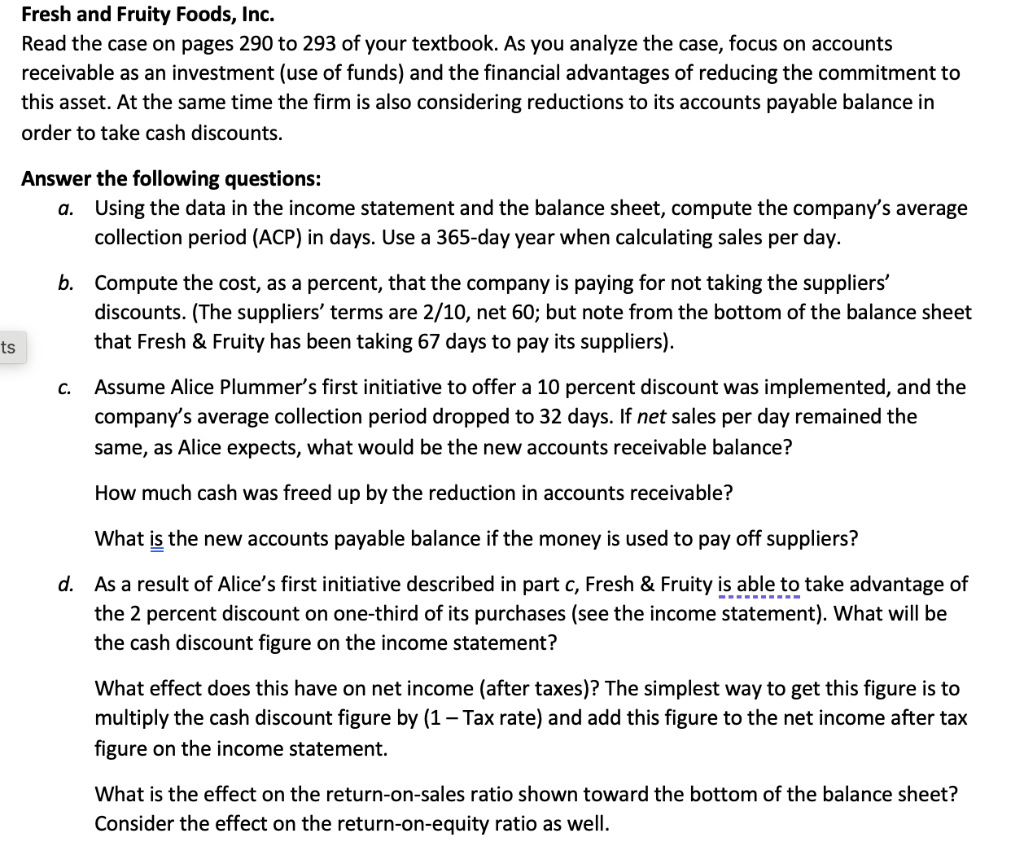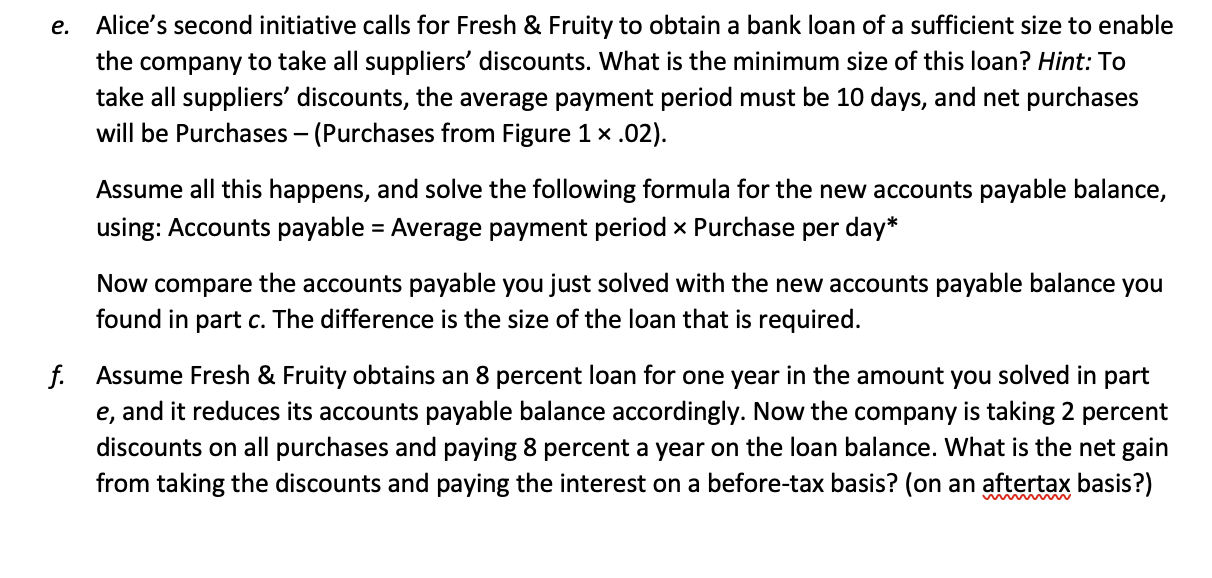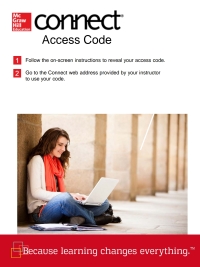

Fresh and Fruity Foods, Inc. Read the case on pages 290 to 293 of your textbook. As you analyze the case, focus on accounts receivable as an investment (use of funds) and the financial advantages of reducing the commitment to this asset. At the same time the firm is also considering reductions to its accounts payable balance in order to take cash discounts. Answer the following questions: a. Using the data in the income statement and the balance sheet, compute the company's average collection period (ACP) in days. Use a 365-day year when calculating sales per day. b. Compute the cost, as a percent, that the company is paying for not taking the suppliers' discounts. (The suppliers' terms are 2/10, net 60; but note from the bottom of the balance sheet that Fresh & Fruity has been taking 67 days to pay its suppliers). ts C. Assume Alice Plummer's first initiative to offer a 10 percent discount was implemented, and the company's average collection period dropped to 32 days. If net sales per day remained the same, as Alice expects, what would be the new accounts receivable balance? How much cash was freed up by the reduction in accounts receivable? What is the new accounts payable balance if the money is used to pay off suppliers? d. As a result of Alice's first initiative described in part c, Fresh & Fruity is able to take advantage of the 2 percent discount on one-third of its purchases (see the income statement). What will be the cash discount figure on the income statement? What effect does this have on net income (after taxes)? The simplest way to get this figure is to multiply the cash discount figure by (1 Tax rate) and add this figure to the net income after tax figure on the income statement. What is the effect on the return-on-sales ratio shown toward the bottom of the balance sheet? Consider the effect on the return-on-equity ratio as well. e. Alice's second initiative calls for Fresh & Fruity to obtain a bank loan of a sufficient size to enable the company to take all suppliers' discounts. What is the minimum size of this loan? Hint: To take all suppliers' discounts, the average payment period must be 10 days, and net purchases will be purchases (Purchases from Figure 1x.02). Assume all this happens, and solve the following formula for the new accounts payable balance, using: Accounts payable = Average payment period ~ Purchase per day* Now compare the accounts payable you just solved with the new accounts payable balance you found in part c. The difference is the size of the loan that is required. f. Assume Fresh & Fruity obtains an 8 percent loan for one year in the amount you solved in part e, and it reduces its accounts payable balance accordingly. Now the company is taking 2 percent discounts on all purchases and paying 8 percent a year on the loan balance. What is the net gain from taking the discounts and paying the interest on a before-tax basis? (on an aftertax basis?) Fresh and Fruity Foods, Inc. Read the case on pages 290 to 293 of your textbook. As you analyze the case, focus on accounts receivable as an investment (use of funds) and the financial advantages of reducing the commitment to this asset. At the same time the firm is also considering reductions to its accounts payable balance in order to take cash discounts. Answer the following questions: a. Using the data in the income statement and the balance sheet, compute the company's average collection period (ACP) in days. Use a 365-day year when calculating sales per day. b. Compute the cost, as a percent, that the company is paying for not taking the suppliers' discounts. (The suppliers' terms are 2/10, net 60; but note from the bottom of the balance sheet that Fresh & Fruity has been taking 67 days to pay its suppliers). ts C. Assume Alice Plummer's first initiative to offer a 10 percent discount was implemented, and the company's average collection period dropped to 32 days. If net sales per day remained the same, as Alice expects, what would be the new accounts receivable balance? How much cash was freed up by the reduction in accounts receivable? What is the new accounts payable balance if the money is used to pay off suppliers? d. As a result of Alice's first initiative described in part c, Fresh & Fruity is able to take advantage of the 2 percent discount on one-third of its purchases (see the income statement). What will be the cash discount figure on the income statement? What effect does this have on net income (after taxes)? The simplest way to get this figure is to multiply the cash discount figure by (1 Tax rate) and add this figure to the net income after tax figure on the income statement. What is the effect on the return-on-sales ratio shown toward the bottom of the balance sheet? Consider the effect on the return-on-equity ratio as well. e. Alice's second initiative calls for Fresh & Fruity to obtain a bank loan of a sufficient size to enable the company to take all suppliers' discounts. What is the minimum size of this loan? Hint: To take all suppliers' discounts, the average payment period must be 10 days, and net purchases will be purchases (Purchases from Figure 1x.02). Assume all this happens, and solve the following formula for the new accounts payable balance, using: Accounts payable = Average payment period ~ Purchase per day* Now compare the accounts payable you just solved with the new accounts payable balance you found in part c. The difference is the size of the loan that is required. f. Assume Fresh & Fruity obtains an 8 percent loan for one year in the amount you solved in part e, and it reduces its accounts payable balance accordingly. Now the company is taking 2 percent discounts on all purchases and paying 8 percent a year on the loan balance. What is the net gain from taking the discounts and paying the interest on a before-tax basis? (on an aftertax basis?)








